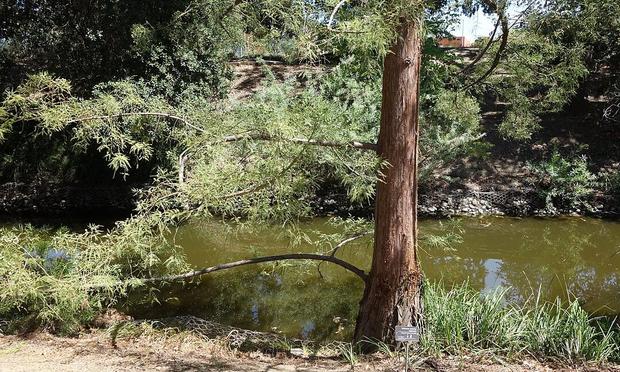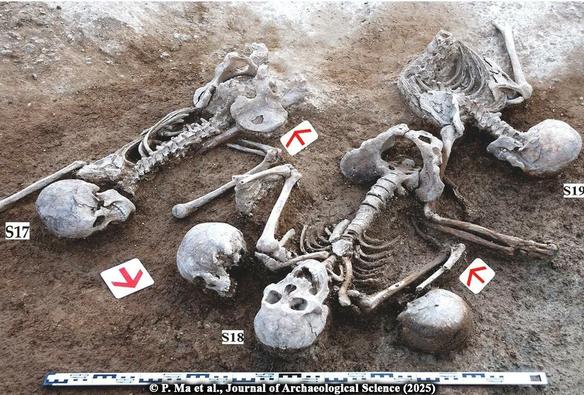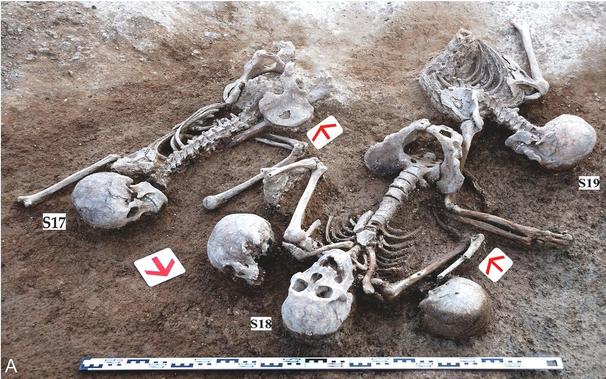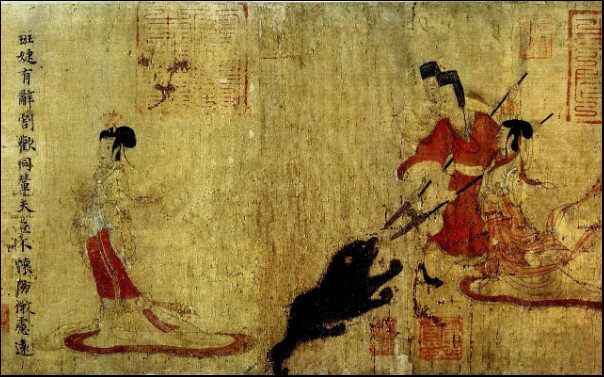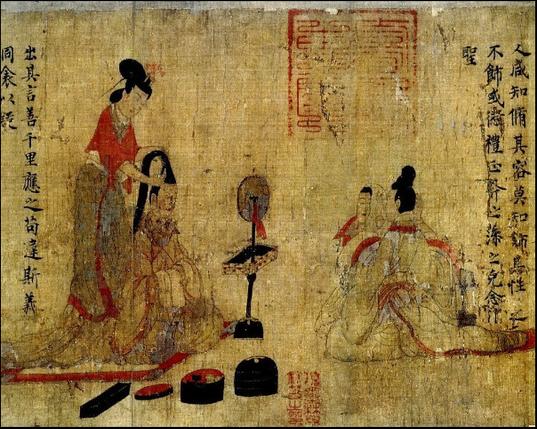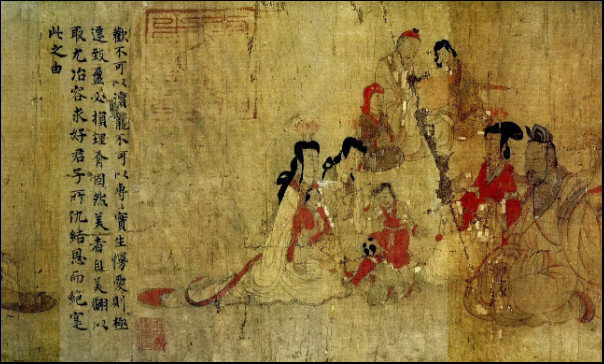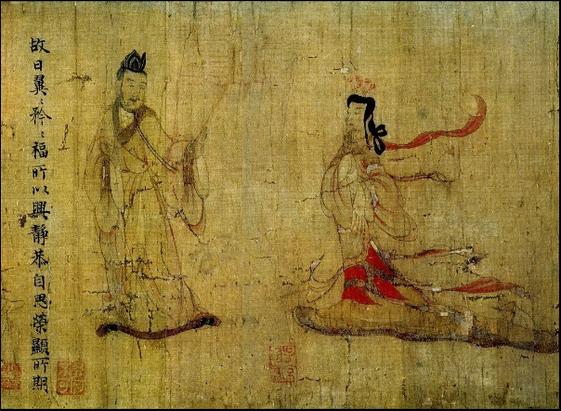Teeth from burial pit in Mongolia trace Han soldiers in the Xiongnu war
New information on a mass burial found at the Bayanbulag site in Mongolia, which is thought to hold the remains of Han warriors who participated in the Han-Xiongnu War, has been revealed by a recent bioarchaeological study...
More information: https://archaeologymag.com/2025/03/burial-pit-in-mongolia-han-soldiers-xiongnu-war/
Follow @archaeology
#archaeology #archeology #archaeologynews #anthropology #handynasty #xiongnuwar #ancientChina
New on the #ISAWNYU news blog:
ISAW Professor Roderick Campbell to Receive the 2025 Japanese Archaeological Association Award
"Campbell's research offers a new perspective that surpasses previous theories of state formation and economic models, shedding light on the complex interactions between the political economy, urbanization, and commercialization of the Shang dynasty. His original and detailed analysis is expected to have a significant impact on subsequent research. Furthermore, the publication of such a discussion in the English-language journal of the Archaeological Society of Japan significantly enhances its value and global relevance."
“Beyond State Formation: Mass Production and Commercialization in Shang China”, Japanese Journal of Archaeology 11(1): 3-20.
https://jjarchaeology.jp/contents/pdf/vol011/11-1_003-019.pdf

ISAW Professor Roderick Campbell to Receive the 2025 Japanese Archaeological Association Award
Congratulations to Professor Roderick Campbell, who has been selected for the 2025 Japanese Archaeology Association Award for the paper, “Beyond State Formation: Mass Production and Commercialization in Shang China”, published in the Japanese Journal of Archaeology 11(1): 3-20.
New on the #ISAWNYU news blog:
Mi Wang, ISAW PhD Student, has received a Humboldt Fellowship for a Post-doctoral Research Fellowship at LMU in Munich
https://isaw.nyu.edu/news/mi-wang-humboldt-fellowship
"Beginning this summer with a four-month German language course, Mi will spend 24 months at Ludwig-Maximilians-Universität München working with Prof. Dr. Armin Selbitschka. Their research project, "Resource Management and Human-Environment Interactions in Early China," investigates the complex dynamics between human societies and their environments in early China. By integrating archaeological, geological, ethnographic, and experimental methods, the project aims to provide new insights into the contextual strategies past societies used to navigate natural landscapes."
#ancientGeography #ancientHistory #archaeology #ancientChina

Mi Wang, ISAW PhD Student, has received a Humboldt Fellowship for a Post-doctoral Research Fellowship at LMU in Munich
Congratulations to ISAW doctoral candidate Mi Wang, who has been awarded a Post-Doctoral Research Fellowship by the Alexander von Humboldt Foundation. She is currently completing her dissertation on cultural identity transformations in the mid-to-late Liangzhu period.
Oldest section of China’s Great Wall discovered, pushing back its origin by 300 years
Archaeologists have unearthed what is now believed to be the earliest section of the Great Wall of China, predating previous estimates by approximately 300 years. This section dates back to the late Western Zhou Dynasty (1046 BCE–771 BCE) and the early Spring and Autumn Period (770 BCE–476 BCE)...
More information: https://archaeologymag.com/2025/02/oldest-section-of-chinas-great-wall-discovered/
Follow @archaeology
Despite being restricted by the male-created social conventions, there were cases of Chinese women who became celebrated poets, artists, calligraphers, historians, and even rulers. Below are some details of two such women, one the paradigm of virtue, the other more ambiguous and controversial.
Ban Zhao (41- c. 115 CE) was one of the most famous female writers and scholars in early China. She wrote commentaries on Confucian classics, and her most famous work remains her Nuje or “Instructions for Women” which expanded on the four virtues expected of women first outlined in the classic Liji ritual text. Although Zhao stressed that women should remain subservient to their husbands she did express a belief in the benefits of women educating themselves. The Nuje text was hugely influential, studied by countless generations of women.
Wu Zetian (625-705 CE), the concubine of Tang dynasty emperors Taizong (626-649 CE) and Gaozong (r. 649-683 CE), was officially made empress by the latter in 655 CE. On the death of Gaozong, she reigned as regent for her son Zhongzong (684 CE) and his successor and elder brother Ruizong (r. 684-690 CE). In 690 CE Wu Zetian went one step further and took the throne by declaring herself emperor, set up her court at Luoyang and declared the beginning of a new dynasty, the Zhou. Her reign, at least in Chinese tradition (which gives yet another insight into attitudes to women), was one of despotic terror punctuated by family assassinations and beset by political intrigues. Nevertheless, her ruthless approach did lead to the expansion of the state bureaucracy, and she was a great patron of Buddhist art, seen notably at the Longmen caves.
Illustration : Admonitions Scroll, also known as the Admonitions of the Court Instructress, by Gu Kaizhi, between the 5th to 8th century.
#china #ancientchina #archeology #history #art #arthistory #painting #womenfromhistory
Although Chinese men usually had only one wife, they did openly make use of courtesans and invited concubines to live permanently in the family home. Prostitution was an open part of town and city life, with officials and merchants frequenting houses where prostitutes plied their trade for the purposes of corporate entertainment.
Concubines, meanwhile, apart from the pleasures their charms might bring, often provided a family with the all-important male heir when the wife only produced daughters. They did not have the legal status of the wife as they were classed as servants and nor were the children of a concubine given equal status and inheritance rights as the children of the wife. The number of concubines in the household was only limited by the husband's means. The wife must never show any jealousy to her husband's concubines - it was also a grounds for divorce, but also it was thought there was a particularly nasty corner of hell awaiting jealous wives.
Concubines usually came from the lower classes and entered the households of the wealthier families in society. A girl from a richer family would only have been given as a concubine to an even richer family or the royal palace. It was not uncommon, though, for a younger sister to accompany a bride and live in the marital home of her sibling as a concubine.
Illustration : Admonitions Scroll, also known as the Admonitions of the Court Instructress, by Gu Kaizhi, between the 5th to 8th century.
#china #ancientchina #archeology #history #art #arthistory #painting #womenfromhistory
Marriage and children were the expected normal course for all adults, and only those men who could not afford a wife did not marry. During the Han Dynasty, for example, unmarried women brought a special tax on their family and women with babies were given a three-year exemption from tax and their husband a one-year exemption. Regarding the sex of children, sons were much more desired than daughters.
For upper-class women, their lives were perhaps more strictly controlled than at any other social level. Expected to remain within the inner chambers of the family home, they had only a very limited freedom of movement. Within the home, women did have significant responsibilities which included management of the household finances and the education of her children, but this did not mean they were the head of the family home.
Women of lower status, such as farmer's wives, were expected to work in the fields - especially in regions where rice was cultivated. As many farmers did not own their own land but worked it as tenants, their wives were, on occasion, subject to abuse from landowners. Many women were forced into prostitution in times of drought or crop failure. Women worked in the home weaving silk and caring for the silkworms that produced it. Some were called upon, like men, to perform the labor service which acted as a form of taxation in many periods of ancient China, but this was only in exceptional circumstances. By the Song dynasty (960-1279 CE) women had more freedom and were running inns and acting as midwives amongst other professions.
Illustration : Admonitions Scroll, also known as the Admonitions of the Court Instructress, by Gu Kaizhi, between the 5th to 8th century.
#china #ancientchina #archeology #history #art #arthistory #painting #womenfromhistory
The bride went to live with the groom in his house or that of his parents, keeping her family surname. Her transferral abode became a great procession when she was carried on a red bridal chair and her feet never touched the ground between the homes in order to ward off evil spirits. On arrival she met her husband, often it was the couple's first meeting. A marriage feast was held and the ancestral tablets were “informed” of the new arrival.
That a wife was not much more than a physical piece of her husband's property is further illustrated in the ancient practice of foot-binding. Girls from aged three upwards had their feet crushed in bindings for years in the belief that the resulting small feet would appeal to her future husband.
In Chinese law, a man could divorce his wife but she had no such right except if the husband particularly mistreated his wife's family. The accepted grounds for divorce were failure to bear a son, evidence of being unfaithful, lack of filial piety to the husband's parents, theft, suffering a virulent or infectious disease and talking too much. Further, a wife could not be divorced if she had no family to return to.
Another social convention was that widows should not remarry. Many did anyway amongst the lower classes, but the idea that the Fates and astrological charts had ordained that a particular couple should live together in matrimony was a difficult hurdle to get over in the case of a second marriage. An even greater barrier was a financial one as a widow did not inherit the property of her dead husband and so she had nothing to offer a new husband in that department.
Illustration : Admonitions Scroll, also known as the Admonitions of the Court Instructress, by Gu Kaizhi, between the 5th to 8th century.
#china #ancientchina #archeology #history #art #arthistory #painting #womenfromhistory

